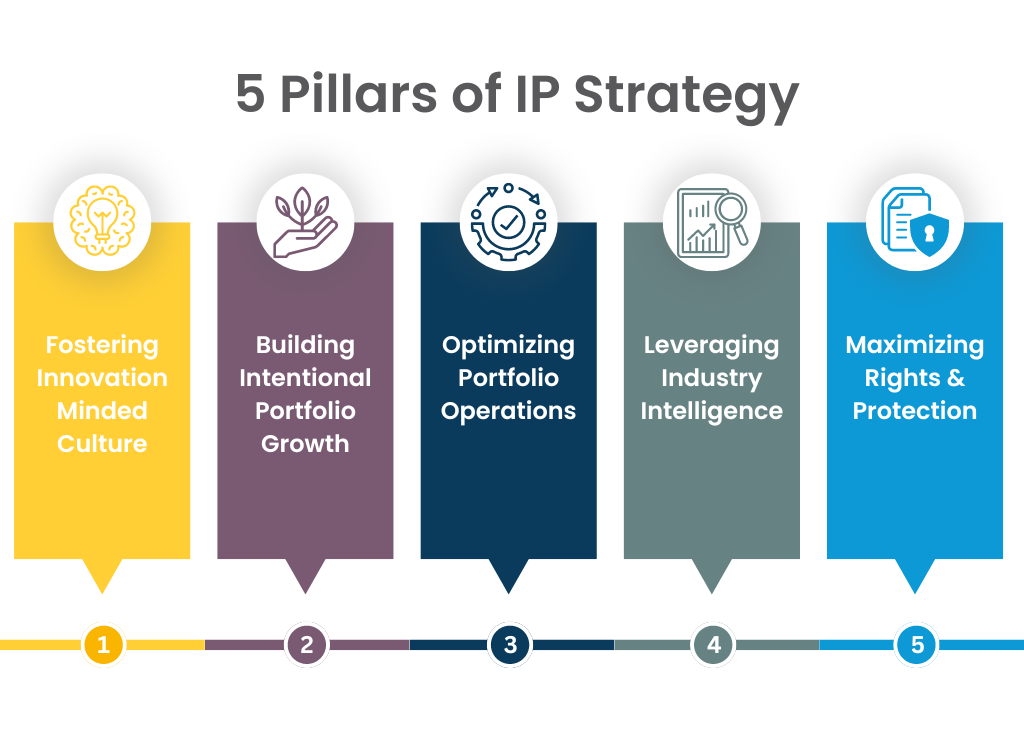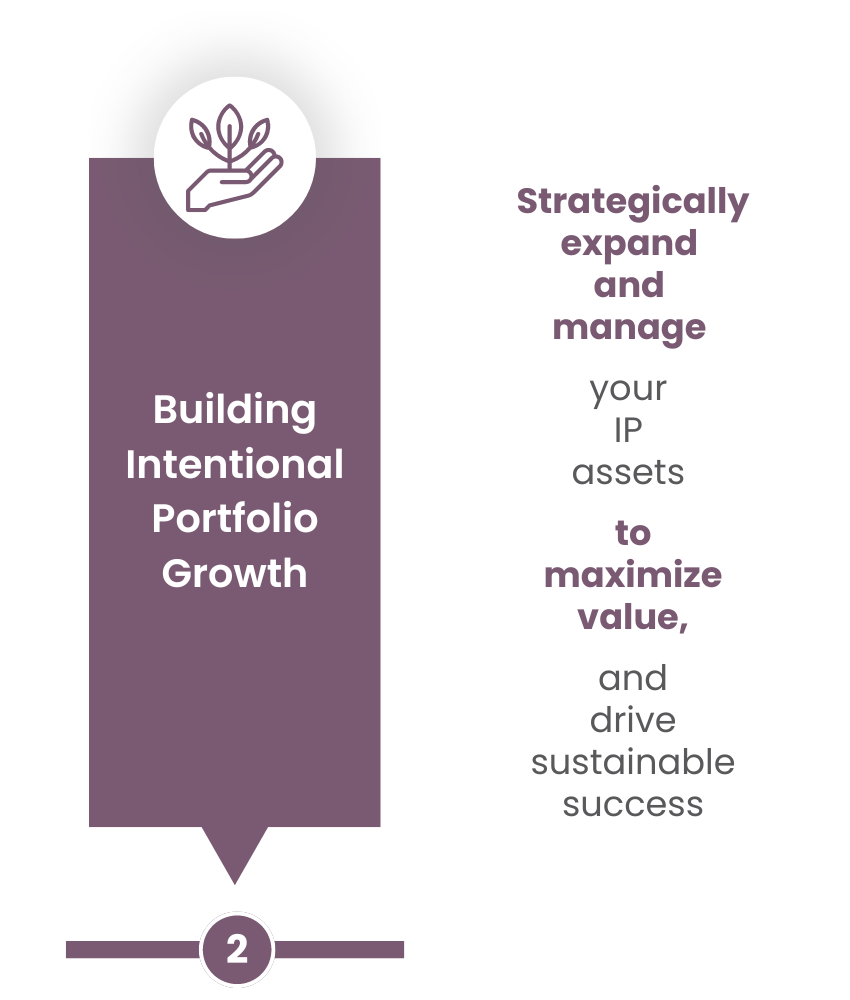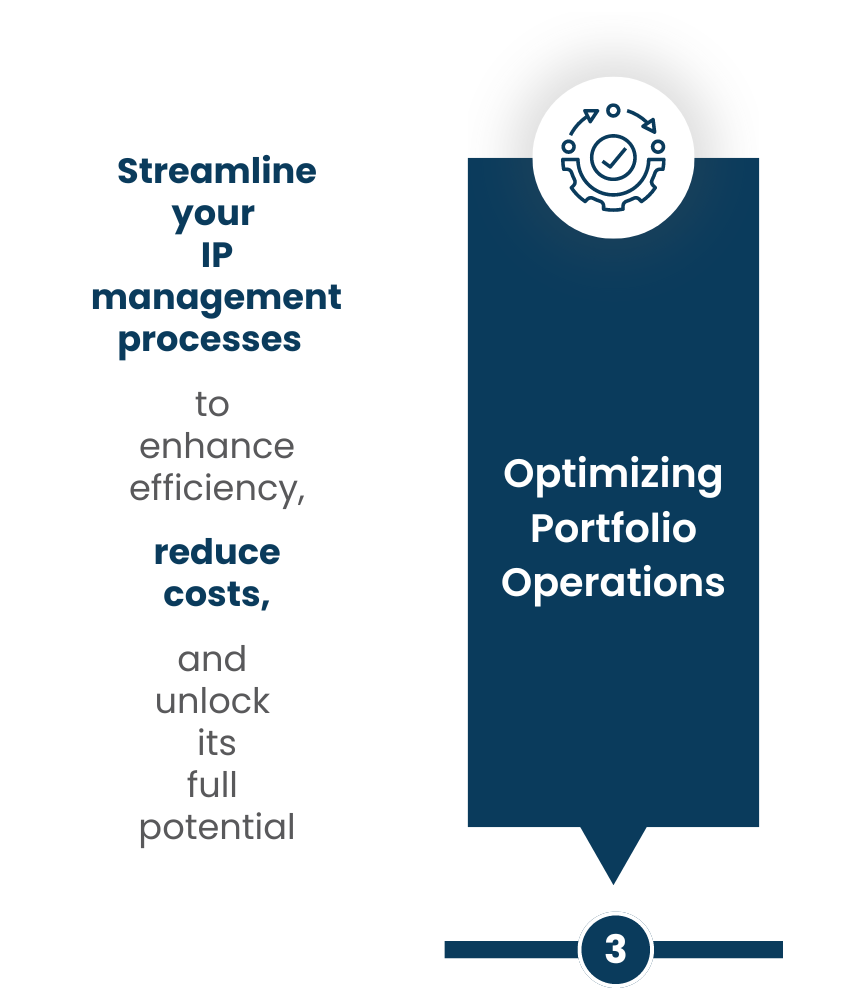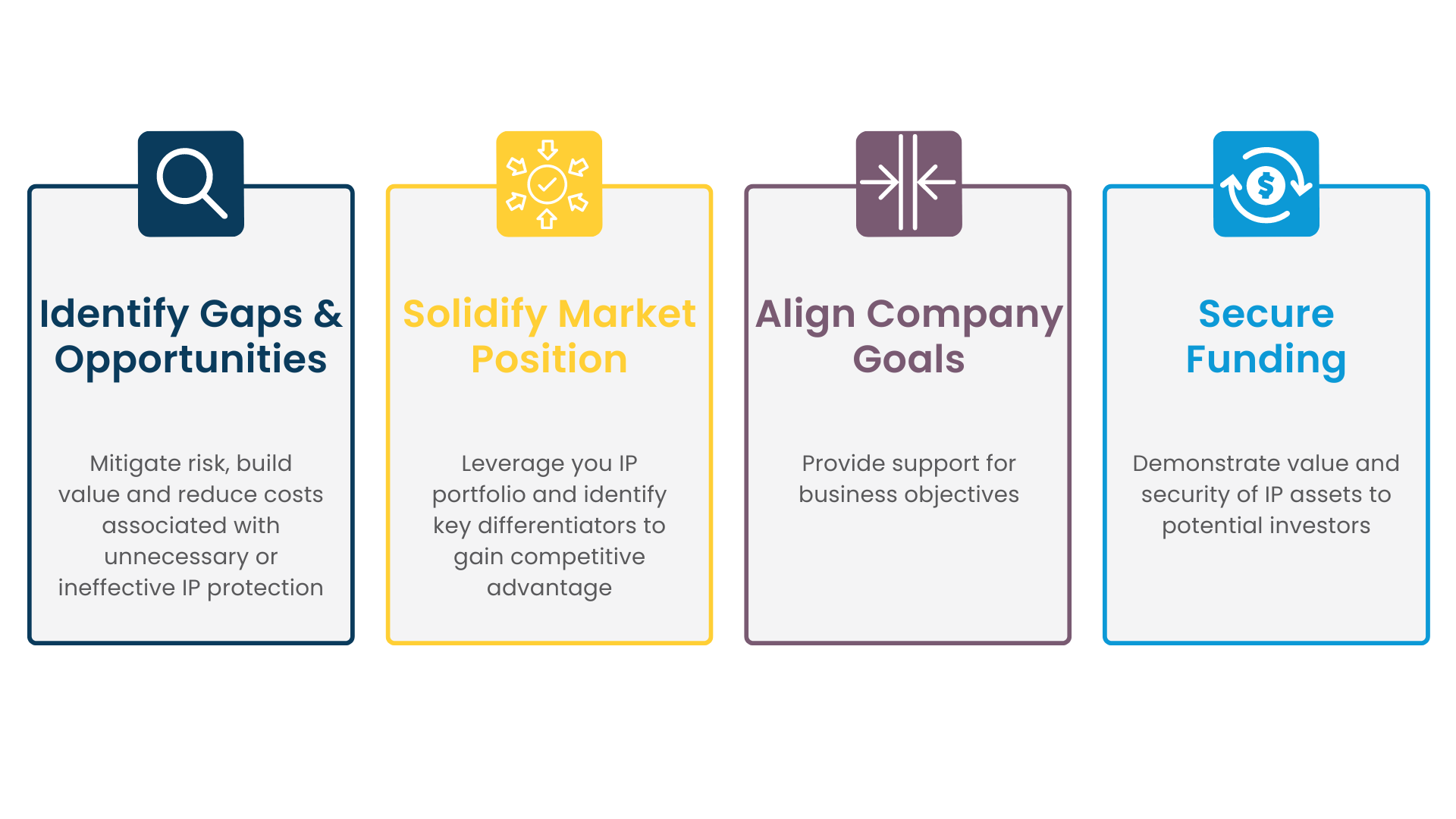Everything You Need to Know About Intellectual Property
Investors provide more equity financing to companies that comprehensively use Intellectual Property (IP) than to companies that do not leverage IP or only hold formal IP. There are myriad other benefits to a robust IP portfolio. To comprehensively use (and protect) your IP, you're going to need an IP strategy.
For innovation minded companies, IP is an important asset that can have a real impact on your success and valuation, making it vital to develop efficient protection strategies that are both pragmatic and proactive. A robust and valuable IP portfolio will leverage the different forms of protection in ways that will not only offer protection from competitors but will serve your overall business objectives.
Intellectual property doesn't have to be complicated but it should be intentional, aligning yourself with knowledgeable partners and advisors can help you build and grow a portfolio that works (and makes sense) for you.
Intellectual Property (IP) is now the most valuable asset class on the planet and yet establishing IP value and exploiting the economic potential of IP assets remain much of a mystery to businesses, financiers and investors.
World Intellectual Property Office
Intellectual Property is more than just patents and a comprehensive IP strategy should account for all types of protection.
So...Let's back up for a moment to discuss, what is intellectual property? Often referred to simply as 'IP', the term refers to 'creations of the mind' that hold commercial value. These can include inventions, literary and artistic works, symbols, names, images, and designs used in commerce. These intangible assets can often be formally protected, usually by one of the four main types of IP - patents (utility or design), trademarks, copyright, and trade secrets.

In simple terms, IP gives you the legal right to own and control these unique elements of your business. This could be a patented invention, a trademarked brand name, copyrighted software code, or even trade secrets like a special recipe (think the KFC recipe) or business method. Protecting your IP ensures that you have exclusive rights to your creations, preventing competitors from using or copying them without permission. This not only safeguards your business's competitive edge but also adds value to your company by creating a layer of protection to the assets that set you apart in the market.
Each type of intellectual property has unique advantages, disadvantages, processes, and considerations that will affect how and when you use it. For a business, IP is crucial because it represents your company's innovative ideas, products, and branding.
Download our IP Best Practices Checklist
One of the biggest challenges we see with businesses trying to develop an IP strategy is that they often don't know what they don't know, leading to an ad hoc approach rather than a proactive and pragmatic one. That might be filing a patent when a trade secret would be better or filing a provisional patent without enough detail (If this sounds confusing to you, keep reading).

Many people think that having an IP strategy simply means having a few patents pending… But there is a lot more to it than that!
An IP strategy is a detailed plan on how you plan to grow, protect, and manage your IP assets and should include everything from how you plan to build an innovative IP culture to how you can monetize and leverage existing IP. An effective one encompasses a broad range of components and is essential for ensuring that your intellectual property is adequately protected with the right forms of IP safeguards.
Your IP Strategy should be based on your company’s business objectives, context, and strategy and the components of your IP strategy should be the pillars to support these goals.
IP strategy needs to be a deliberate, ongoing and proactive process with executive accountability.
Watch our video "On IP Strategy" from our IP Strategy Academy

Fostering an Innovation Minded Culture
Culture drives performance, and an innovation-minded culture encourages everyone to contribute ideas. By fostering an environment where creativity is valued and all team members feel empowered to share their insights, businesses can achieve high levels of productivity and growth. An inclusive culture of innovation also enhances collaboration and problem-solving across the organization.
Building Intentional Portfolio Growth
Always keep the end goal in mind. Your growth strategy should be intentional and value-based. By strategically expanding and managing your portfolio, you ensure that every addition aligns with your long-term objectives and maximizes value. This means making strategic choices that enhance your current assets and position you for future success. Intentional portfolio growth involves thorough planning, regular assessment, and a keen understanding of market dynamics to make informed decisions that drive sustainable success.
- Is Your Innovation Management Stalled?
- Business Growth Through Patents
- Patents and Pivoting
- Planting the Seeds of IP Success


Optimizing Portfolio Operations
When it comes to IP, doing it right the first time will help tremendously. Effective portfolio operations should be managed diligently and in an optimized manner to ensure maximum efficiency and value. This involves implementing best practices for IP management, such as thorough documentation, regular audits, and strategic planning. By optimizing your portfolio operations, you can minimize risks, reduce costs, and enhance the overall performance of your intellectual property assets. Proper management ensures that each IP asset is effectively utilized and protected, contributing to your long-term business success.
Leveraging Industry Intelligence
Leveraging insights through industry intelligence allows you to make better data-driven decisions. For IP analytics to be truly useful, they must deliver actionable insights. This means starting with the end in mind: what specific question are you trying to answer? By focusing on your key objectives and the information you need to achieve them, you can transform raw data into strategic guidance. Effective IP analytics involve identifying relevant trends, understanding competitive landscapes, and uncovering opportunities and risks. This approach ensures that your decisions are informed, targeted, and aligned with your overall strategic goals, leading to more effective and impactful outcomes.
- How to Leverage Patent Databases to Support Business Decisions
- Position Your R&D for Growth with a Patent Landscape Analysis
- Navigating Competitive White Spaces
- Patents: A Low Cost Method to Enter New Markets?
- Be in the Know Using Patent Databases


Maximizing Rights Protections
To maximize your IP position, it is essential to strengthen and diversify your protection strategies. By doing so, you can enhance the impact of your intellectual property and safeguard it against potential threats. Additionally, IP can be a significant revenue generator through monetization efforts such as licensing, partnerships, and sales. Implementing comprehensive protection measures and exploring various monetization avenues ensures that your IP not only remains secure but also actively contributes to your business's financial growth and competitive advantage.
- When it Comes to IP, Failing to Plan is Planning to Fail
- IP Infringement is a Two-Way Street
- Obtain Your Patent Quickly and with Minimal Cost
- Patents - The Potential Beyond Your Products
Download our Myths & Mistakes guide for the full details and recommended solutions
Navigating the world of intellectual property can be complex, and many businesses fall prey to common myths and mistakes that can undermine their IP strategy. Misconceptions about the costs, processes, and benefits of IP protection can lead to costly errors and missed opportunities. In this section, we share the most common myths and mistakes we see companies make so that you can recognize and avoid them to build a stronger, more effective IP strategy.
Employee Agreements without IP Assignments
Waiting until after public disclosure to file for patent protection
Growing your IP Portfolio without a forward-looking budget
Establishing a brand without searching or protecting trademarks
Reactive or piecemeal approach to IP Strategy with no accountability
Writing down personal opinions about validity or infringement
Closing important patent families before you should
Filing patent applications when trade secrets would be better
Reactive or piecemeal approach to IP Strategy with no accountability
Writing down personal opinions about validity or infringement
Using open-source software without consideration to the licenses
Thinking someone infringes based on your patent specification
Not fostering or promoting an innovative culture
Filing a quick provisional and thinking your rights are protected
Implementing standard compliant features without consideration to the IP bylaws
Thinking your patents prevent your product from infringing on other patents
Continue to Build Your IP Knowledge with our IP Strategy Academy
IP Strategy provides more than just protection for your intellectual property assets, its a proactive and pragmatic way to optimize value and drive long-term success.
A well-rounded and intentional IP strategy offers the following benefits:

Now that you have a solid understanding of the importance and components of an effective IP strategy, it's time to take the next steps to protect and maximize your intellectual property:
- Set IP Priorities from the Top Down
- Understand your Current Position with an IP Strategy Review and Design
- Get Help to Fund Your IP Strategy
